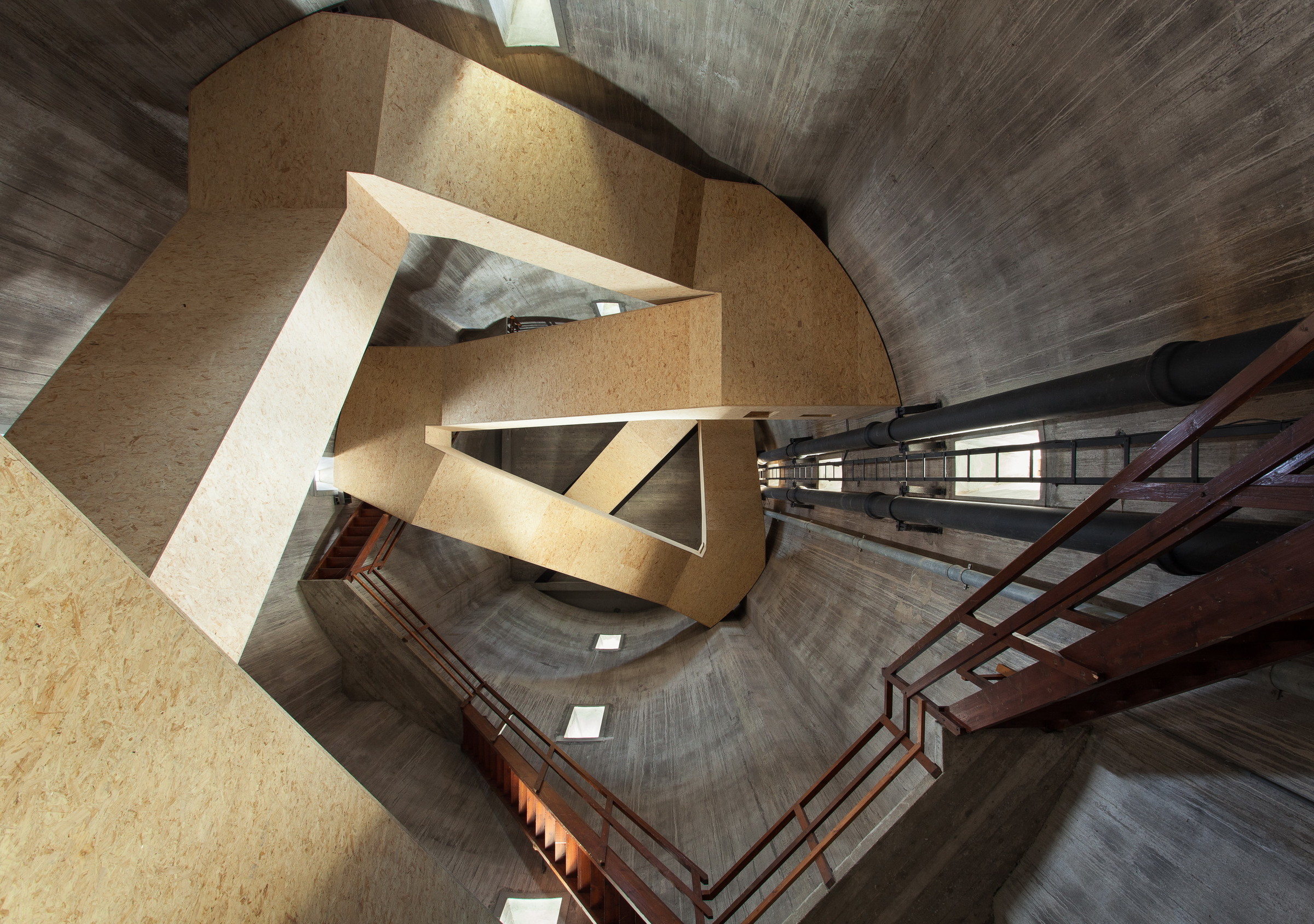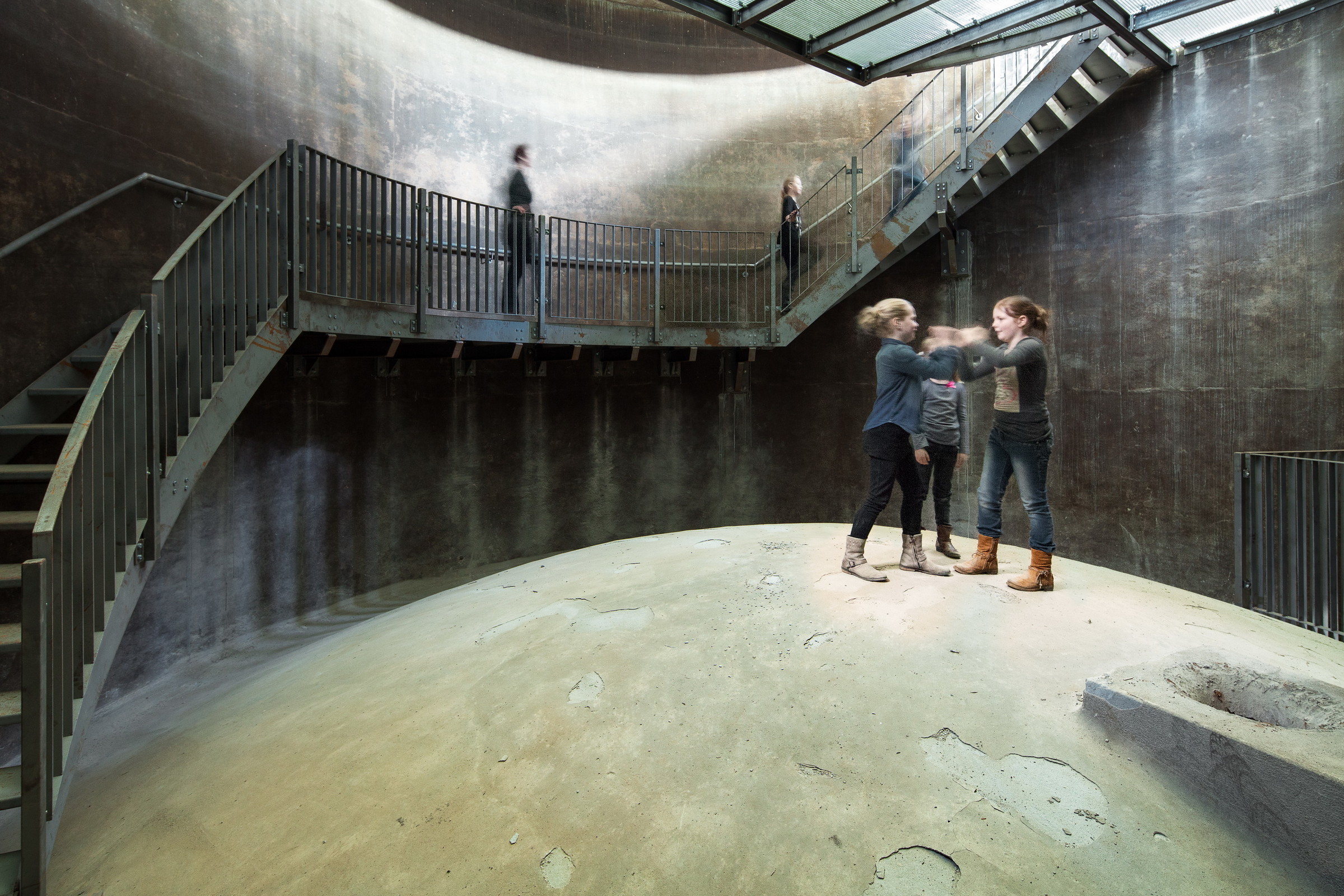Historic Water Tower: From Landmark to Overlook

The St. Jansklooter water tower in the Netherlands sits directly in the middle of the De Wieden National Park, a protected nature reserve. While the tower once provided a vital service to the surrounding town, it has now itself become a protected landmark. Zecc Architects were brought in to transform the water tower from a lovely landmark into a functional way to enjoy the surrounding nature reserve.
The architects added a winding staircase of natural wood to the industrial interior of the water tower leading up to a spectacular observation deck from which to take in the breathtaking scenery. The first part of the staircase leads up to an interior room that displays the original metal stairs alongside the newer wooden stairs.
Following the wooden stairs up further, visitors can still see the original stairs which wound around the interior wall of the tower. The new stairs zig-zag their way up to the top, creating a lovely contrast between the older, industrial materials and the warmer, more natural wood.
The second room visitors will reach is a tall chamber that lets them take in the massive size of the of the concrete reservoir overhead. From there, the original stairs are used again to let visitors walk in a spiral around the inside of the reservoir, further intensifying the feeling of wonderment at the size of the landmark.
At the very top of the monument, part of the water tower’s lid has been removed to create a stunning look-out for visitors. A transparent floor – certainly not for those afraid of heights – lets you look down through the interior of the water tower. Several new windows were added alongside the existing windows, allowing for an even wider view of the surrounding nature preserve.
The architects were careful to retain the traditional look of the structure so that the conversion would not interfere with the historical nature of the water tower. The exterior has been left completely untouched and the interior has been only minimally altered, retaining the landmark’s historic appearance and pleasing the residents of the area who view the water tower and the nature reserve as communal property.







